Bowie State University History
Bowie State is an outgrowth of a school that opened in Baltimore, Maryland, on January 9, 1865, by an organization dedicated to offering educational opportunities for Black citizens.
From those humble beginnings, Bowie State has become a comprehensive university, offering 30+ undergraduate majors, 21+ master's degree programs, 18+ specialty certificates and three doctoral programs in a broad range of disciplines. Bowie State University continues to build on its legacy of providing access to a high-quality education.
Founding of the First School
The Baltimore Association for the Moral and Educational Improvement of the Colored People was organized in 1864 by 46 men, comprised of businessmen, lawyers, clergymen and Quakers, committed to opening schools to educate the state’s newly emancipated citizens. One of those men was Joseph M. Cushing, an outspoken champion for the education of the Black population.
As chairman of the Educational Committee for Maryland’s Constitutional Convention in 1864, Cushing chastised the committee’s refusal to fund schools for Black people: “There will come a time when this state will be forced by public opinion to provide means for educating our colored population.” The association opened its first Baltimore school, School #1, on January 9, 1865, in the African Baptist Church in Crane’s Building on the corner of Calvert and Saratoga streets. The school offered courses in the elements of education. Courses to train teachers were added in 1866.
The facility was woefully inadequate. In 1867, with the aid of the Freedmen’s Bureau, the Quakers of England and others, the Baltimore Association purchased and renovated the Old Friends Meeting House at the corner of Saratoga and Courtland streets to house the Baltimore Normal School for Colored Teachers.
Move to Bowie
After repeated petitions from the Baltimore Normal School trustees, the state legislature authorized the Board of Education to assume control of the school in 1908 and re-designated it as Normal School No. 3, finally fulfilling the dream of Cushing and the Baltimore Association. By 1910, the state decided to relocate the school to Bowie, Maryland, purchasing a 187-acre tract formerly known as Jericho Farm dating to 1716. The school opened at the new location in 1911 with about 60 students and Don Speed Smith Goodloe as the first Black man to head the school as principal. In 1914, its name changed to the Maryland Normal and Industrial School at Bowie.
Under President Leonidas James, the school began a two-year professional curriculum in teacher education in 1925, which expanded to a three-year program in 1931. A four-year program to train elementary school teachers was introduced in 1935, and the school was renamed the Maryland Teachers College at Bowie in 1938.
Teacher education continued to expand under the 25-year tenure of President William Henry. The institution established programs to train teachers for junior high school (1951) and secondary education (1961) and advanced toward becoming a liberal arts college.
Transition to a State Liberal Arts College
The Maryland State Legislature authorized the college to become Bowie State College in 1963, following the establishment of a liberal arts program. New majors in English, history and general social science were added, expanding offerings beyond teacher education.
Under President Samuel Myers, the college established its first graduate degree program, offering the Master of Education in 1969. The first director of the graduate division was Dr. J. Alexander Wiseman, a graduate of the Maryland Teachers College at Bowie and the first African-American to earn a doctoral degree from the University of Maryland, College Park.
Emergence as a Comprehensive University
In 1988, Bowie State College became Bowie State University under President James Lyons, reflecting significant growth in academic programs, enrollment and community service. On the same day, the university also became one of the member institutions of the newly formed University System of Maryland.
Bowie State University gained recognition as a leader in the education of science, technology, engineering and mathematics (STEM) disciplines. In 1995, Bowie State won an 11-year, $27 million award from the National Aeronautics and Space Administration/National Science Foundation, becoming one of only six national Model Institutions for Excellence in STEM.
Today’s Bowie State University
Bowie State University ranks among the nation’s top comprehensive universities, cultivating next-generation leaders by providing opportunities for students to discover their strengths through focused academic experiences and opportunities to tackle real-world problems.
Now more than ever, Bowie State University is committed to preparing students for success in a highly technological, global society.
